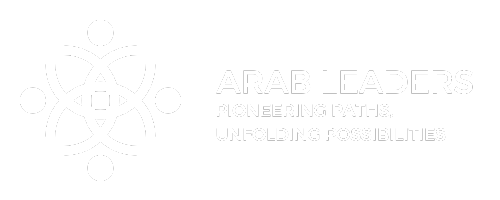Table of Contents
- Introduction
- Career Advancement Strategies for HR Professionals
- Essential HR Templates for Streamlining Processes
- Building a Personal Brand in Human Resources
- Networking Tips for HR Career Growth
- Key Skills Every HR Professional Should Develop
- The Importance of Continuous Learning in HR
- How to Create an Effective HR Resume Template
- Interview Preparation Templates for HR Candidates
- Performance Review Templates for HR Success
- Q&A
- Conclusion
“Unlock Your Potential: 6 Essential Templates to Elevate Your HR Career!”
Introduction
“Elevate Your HR Career: 6 Essential Templates for Success” is a comprehensive guide designed to empower HR professionals at all stages of their careers. This resource provides six meticulously crafted templates that streamline essential HR processes, enhance organizational efficiency, and foster professional growth. From performance evaluation forms to onboarding checklists, these templates are tailored to meet the dynamic needs of the modern workplace. By utilizing these tools, HR practitioners can elevate their strategic impact, improve employee engagement, and drive organizational success, ultimately positioning themselves as invaluable assets within their organizations.
Career Advancement Strategies for HR Professionals
In the ever-evolving landscape of human resources, career advancement requires a strategic approach that combines skill development, networking, and the effective use of resources. As HR professionals seek to elevate their careers, understanding the importance of templates can significantly streamline processes and enhance productivity. By leveraging essential templates, HR practitioners can not only improve their efficiency but also position themselves as valuable assets within their organizations.
To begin with, one of the most critical strategies for career advancement in HR is the continuous development of skills. This involves staying updated with the latest trends in HR practices, technology, and compliance regulations. Utilizing templates for performance reviews, training programs, and employee onboarding can facilitate this learning process. For instance, a well-structured performance review template not only saves time but also ensures that evaluations are comprehensive and aligned with organizational goals. By mastering these templates, HR professionals can demonstrate their ability to implement effective performance management systems, thereby enhancing their credibility and visibility within the organization.
Moreover, networking plays a pivotal role in career advancement. Building relationships with other HR professionals can provide valuable insights and opportunities for collaboration. Utilizing templates for networking outreach, such as introductory emails or follow-up messages, can help streamline communication efforts. These templates can be customized to reflect personal branding while ensuring professionalism. By actively engaging with peers through networking events or online platforms, HR professionals can expand their knowledge base and uncover potential career opportunities that may not be publicly advertised.
In addition to skill development and networking, seeking mentorship is another effective strategy for career advancement. A mentor can provide guidance, share experiences, and offer constructive feedback. To facilitate this relationship, HR professionals can use templates for setting up mentorship meetings or tracking progress. By documenting goals and outcomes, both the mentor and mentee can ensure that the relationship remains focused and productive. This structured approach not only fosters accountability but also enhances the learning experience, ultimately contributing to career growth.
Furthermore, embracing technology is essential in today’s HR landscape. Many organizations are adopting HR software solutions that require a certain level of proficiency. By utilizing templates for data analysis, reporting, and employee surveys, HR professionals can become adept at using these tools. This proficiency not only improves operational efficiency but also positions HR practitioners as tech-savvy leaders within their organizations. As HR continues to integrate with technology, those who can effectively navigate these tools will be better positioned for advancement.
Additionally, showcasing achievements through well-crafted templates can significantly impact career progression. Whether it’s a resume, LinkedIn profile, or a portfolio of projects, having a clear and professional presentation of accomplishments is crucial. Templates for these documents can help ensure that key achievements are highlighted effectively, making it easier for HR professionals to communicate their value to potential employers or internal stakeholders.
Lastly, setting clear career goals is fundamental to advancement. Utilizing templates for goal-setting can provide a structured approach to defining short-term and long-term objectives. By regularly reviewing and adjusting these goals, HR professionals can maintain focus and motivation, ensuring that they are continually moving forward in their careers.
In conclusion, the path to career advancement in HR is multifaceted, requiring a blend of skill development, networking, mentorship, technological proficiency, effective communication, and goal-setting. By incorporating essential templates into their strategies, HR professionals can enhance their efficiency and effectiveness, ultimately positioning themselves for success in a competitive field.
Essential HR Templates for Streamlining Processes
In the dynamic landscape of human resources, efficiency and organization are paramount for success. As HR professionals navigate the complexities of recruitment, employee management, and compliance, having the right tools at their disposal can significantly streamline processes. Among these tools, essential HR templates stand out as invaluable resources that not only save time but also enhance the overall effectiveness of HR operations. By implementing these templates, HR professionals can focus more on strategic initiatives rather than getting bogged down in administrative tasks.
One of the most critical templates in any HR toolkit is the job description template. A well-crafted job description serves as the foundation for the recruitment process, clearly outlining the responsibilities, qualifications, and expectations for potential candidates. By utilizing a standardized template, HR professionals can ensure consistency across job postings, making it easier to attract the right talent. Furthermore, a comprehensive job description can aid in performance evaluations and career development discussions, providing a clear reference point for both employees and managers.
In addition to job descriptions, onboarding templates play a crucial role in integrating new hires into the organization. A structured onboarding template can guide HR professionals through the essential steps of welcoming a new employee, from paperwork and benefits enrollment to training schedules and introductions to team members. By following a consistent onboarding process, organizations can enhance the new hire experience, reduce turnover rates, and foster a sense of belonging from day one. This not only benefits the new employee but also contributes to a more cohesive workplace culture.
Another essential template is the performance appraisal form. Regular performance evaluations are vital for employee development and organizational growth. A well-designed appraisal template allows managers to provide constructive feedback, set goals, and recognize achievements in a structured manner. By standardizing the evaluation process, HR can ensure that all employees receive fair and consistent assessments, which can lead to improved morale and productivity. Moreover, these templates can facilitate discussions about career progression and skill development, aligning individual aspirations with organizational objectives.
Furthermore, compliance checklists are indispensable for HR departments, particularly in today’s regulatory environment. These templates help ensure that organizations adhere to labor laws, safety regulations, and industry standards. By utilizing a compliance checklist, HR professionals can systematically review policies and practices, identifying areas that require attention or improvement. This proactive approach not only mitigates legal risks but also fosters a culture of accountability and transparency within the organization.
Additionally, exit interview templates provide valuable insights into employee turnover. Conducting exit interviews using a standardized template allows HR to gather consistent feedback from departing employees. This information can reveal underlying issues within the organization, such as management practices or workplace culture, enabling HR to implement necessary changes. By understanding the reasons behind employee departures, organizations can enhance retention strategies and create a more positive work environment.
Lastly, communication templates, such as employee newsletters or policy updates, are essential for maintaining transparency and engagement within the workforce. These templates ensure that important information is conveyed clearly and consistently, fostering a culture of open communication. By keeping employees informed about organizational changes, benefits, and opportunities for professional development, HR can enhance employee satisfaction and loyalty.
In conclusion, the integration of essential HR templates into daily operations can significantly elevate the effectiveness of human resources. By streamlining processes such as recruitment, onboarding, performance evaluation, compliance, exit interviews, and communication, HR professionals can focus on strategic initiatives that drive organizational success. Embracing these templates not only enhances efficiency but also contributes to a more engaged and productive workforce.
Building a Personal Brand in Human Resources
In the competitive landscape of human resources, building a personal brand is not merely an option; it is a necessity for career advancement and professional recognition. A well-defined personal brand can set you apart from your peers, showcasing your unique skills, values, and experiences. To begin this journey, it is essential to understand the core elements that contribute to a strong personal brand. First and foremost, self-awareness plays a pivotal role. By identifying your strengths, weaknesses, and passions, you can create a brand that authentically represents who you are as an HR professional. This introspection allows you to align your career goals with your personal values, ensuring that your brand resonates with both your professional aspirations and your authentic self.
Once you have established a clear understanding of your personal identity, the next step is to articulate your brand message. This involves crafting a concise narrative that communicates your expertise and the unique value you bring to the table. For instance, if you specialize in talent acquisition, your brand message might emphasize your ability to identify and nurture top talent, thereby contributing to organizational success. By consistently communicating this message across various platforms, including your resume, LinkedIn profile, and professional networking events, you can reinforce your brand and make a lasting impression on potential employers and colleagues.
In addition to crafting a compelling narrative, it is crucial to leverage social media and professional networks to amplify your personal brand. Platforms like LinkedIn provide an excellent opportunity to showcase your achievements, share industry insights, and engage with other professionals in the field. By actively participating in discussions, sharing relevant content, and connecting with thought leaders, you can position yourself as a knowledgeable and engaged HR professional. Furthermore, consider joining HR-related groups and associations, as these communities can provide valuable networking opportunities and enhance your visibility within the industry.
Moreover, consistency is key when it comes to personal branding. Your online presence, professional interactions, and even your appearance should align with the image you wish to project. This consistency not only reinforces your brand but also builds trust among your peers and potential employers. For example, if you present yourself as a forward-thinking HR leader, ensure that your contributions to discussions and your professional development efforts reflect that mindset. This alignment between your actions and your brand message will help solidify your reputation in the field.
As you continue to develop your personal brand, it is also important to seek feedback from trusted colleagues and mentors. Constructive criticism can provide valuable insights into how others perceive your brand and highlight areas for improvement. By being open to feedback, you can refine your brand message and ensure that it accurately reflects your professional identity. Additionally, consider investing in your professional development through certifications, workshops, and conferences. These opportunities not only enhance your skills but also demonstrate your commitment to growth and excellence in the HR field.
In conclusion, building a personal brand in human resources is a multifaceted process that requires self-awareness, clear messaging, strategic networking, consistency, and a commitment to continuous improvement. By taking these steps, you can elevate your HR career and position yourself as a leader in the industry. Ultimately, a strong personal brand not only enhances your professional reputation but also opens doors to new opportunities, allowing you to make a meaningful impact in the field of human resources.
Networking Tips for HR Career Growth

Networking is a critical component of career growth in the field of Human Resources (HR). As the landscape of HR continues to evolve, professionals must cultivate relationships that not only enhance their knowledge but also open doors to new opportunities. To effectively navigate this dynamic environment, it is essential to adopt strategic networking practices that can significantly elevate your HR career.
First and foremost, understanding the importance of building a diverse network is crucial. Engaging with professionals from various industries and backgrounds can provide fresh perspectives and insights that are invaluable in HR. This diversity fosters creativity and innovation, allowing HR practitioners to develop solutions that are not only effective but also inclusive. Therefore, attending industry conferences, workshops, and seminars can be an excellent way to meet individuals who can contribute to your professional growth. These events often feature thought leaders and experts who share their experiences and knowledge, making them ideal venues for networking.
Moreover, leveraging social media platforms, particularly LinkedIn, can enhance your networking efforts. By actively participating in discussions, sharing relevant content, and connecting with other HR professionals, you can establish your presence in the field. It is important to personalize connection requests and engage with your network by commenting on their posts or sharing insights. This not only strengthens your relationships but also positions you as a knowledgeable and approachable professional in the HR community.
In addition to online networking, consider the value of mentorship. Seeking out a mentor who has extensive experience in HR can provide guidance and support as you navigate your career path. A mentor can offer insights into industry trends, share their own experiences, and help you identify opportunities for growth. Furthermore, being a mentor to others can also be beneficial. Teaching and guiding less experienced professionals not only reinforces your own knowledge but also expands your network as you connect with their contacts.
As you build your network, it is essential to maintain these relationships over time. Regular follow-ups, whether through emails, phone calls, or social media interactions, can keep the lines of communication open. Sharing articles, resources, or even just checking in can demonstrate your genuine interest in maintaining the relationship. This ongoing engagement can lead to collaborative opportunities, referrals, or even job offers down the line.
Additionally, volunteering for HR-related organizations or community initiatives can further enhance your networking efforts. By contributing your skills and expertise, you not only give back to the community but also connect with like-minded professionals who share your passion for HR. These experiences can lead to meaningful relationships and may even result in job opportunities that are not publicly advertised.
Finally, it is important to approach networking with a mindset of reciprocity. While it is natural to seek opportunities for personal advancement, consider how you can also support others in their career journeys. By fostering a culture of mutual support, you can create a network that is not only beneficial for you but also for your connections. This collaborative spirit can lead to stronger relationships and a more vibrant professional community.
In conclusion, effective networking is a multifaceted approach that requires intentionality and effort. By building a diverse network, leveraging social media, seeking mentorship, maintaining relationships, volunteering, and embracing reciprocity, HR professionals can significantly enhance their career prospects. As you implement these strategies, remember that networking is not just about what you can gain; it is also about what you can contribute to the professional community.
Key Skills Every HR Professional Should Develop
In the dynamic landscape of human resources, professionals must cultivate a diverse set of skills to navigate the complexities of the workplace effectively. As organizations evolve, the role of HR has expanded beyond traditional functions, necessitating a more strategic approach. One of the key skills every HR professional should develop is effective communication. This encompasses not only verbal and written communication but also the ability to listen actively. By honing these skills, HR professionals can foster a culture of openness and trust, ensuring that employees feel heard and valued. This, in turn, enhances employee engagement and retention, which are critical for organizational success.
Moreover, analytical skills have become increasingly important in the HR field. With the rise of data-driven decision-making, HR professionals must be adept at interpreting data related to employee performance, recruitment metrics, and workforce trends. By leveraging analytics, HR can identify patterns and insights that inform strategic initiatives, such as talent acquisition and employee development programs. This analytical mindset allows HR professionals to make informed decisions that align with the organization’s goals, ultimately driving performance and productivity.
In addition to communication and analytical skills, emotional intelligence is another essential competency for HR professionals. The ability to understand and manage one’s own emotions, as well as empathize with others, is crucial in fostering a positive workplace environment. HR professionals often serve as mediators in conflicts and must navigate sensitive situations with care. By developing emotional intelligence, they can build stronger relationships with employees, enhance team dynamics, and create a supportive culture that promotes well-being and collaboration.
Furthermore, adaptability is a vital skill in the ever-changing world of HR. The workplace is influenced by various factors, including technological advancements, shifting workforce demographics, and evolving labor laws. HR professionals must be prepared to embrace change and lead their organizations through transitions. This requires a proactive mindset and a willingness to learn new tools and methodologies. By being adaptable, HR professionals can not only respond to challenges but also seize opportunities for innovation and improvement.
Another critical skill is knowledge of employment law and compliance. As organizations face increasing scrutiny regarding their practices, HR professionals must stay informed about legal requirements and ethical standards. This knowledge not only protects the organization from potential liabilities but also ensures that employees are treated fairly and equitably. By understanding the legal landscape, HR professionals can implement policies and practices that promote a culture of compliance and integrity.
Lastly, strategic thinking is an indispensable skill for HR professionals aiming to elevate their careers. This involves aligning HR initiatives with the broader business strategy and understanding how human capital contributes to organizational success. By adopting a strategic mindset, HR professionals can position themselves as key partners in driving business outcomes. This requires not only a deep understanding of the organization’s goals but also the ability to anticipate future needs and trends in the workforce.
In conclusion, the landscape of human resources is continually evolving, and professionals must develop a robust skill set to thrive in this environment. By focusing on effective communication, analytical skills, emotional intelligence, adaptability, knowledge of employment law, and strategic thinking, HR professionals can enhance their effectiveness and contribute significantly to their organizations. As they cultivate these essential skills, they will be better equipped to navigate the complexities of the workplace and drive meaningful change within their organizations.
The Importance of Continuous Learning in HR
In the ever-evolving landscape of human resources, the importance of continuous learning cannot be overstated. As organizations adapt to new technologies, shifting workforce dynamics, and changing regulatory environments, HR professionals must remain agile and informed. This necessity for ongoing education is not merely a trend; it is a fundamental aspect of professional development that can significantly enhance an HR career. By embracing continuous learning, HR practitioners can better navigate the complexities of their roles and contribute more effectively to their organizations.
One of the primary reasons continuous learning is vital in HR is the rapid pace of change in employment laws and regulations. For instance, legislation related to employee rights, workplace safety, and benefits can shift dramatically, often requiring HR professionals to stay updated to ensure compliance. Failure to do so can lead to legal repercussions for both the individual and the organization. Therefore, engaging in regular training sessions, workshops, or online courses can equip HR professionals with the knowledge necessary to interpret and implement these changes effectively.
Moreover, the rise of technology in the workplace has transformed HR practices, making it essential for professionals in the field to develop new skills. From applicant tracking systems to performance management software, technology plays a crucial role in streamlining HR processes. As such, HR professionals must familiarize themselves with these tools to enhance efficiency and improve employee experiences. Continuous learning through webinars, certifications, or industry conferences can provide valuable insights into the latest technological advancements and best practices, enabling HR practitioners to leverage these tools to their advantage.
In addition to legal and technological changes, the evolving nature of the workforce itself necessitates a commitment to continuous learning. Today’s employees are more diverse and have varying expectations regarding workplace culture, benefits, and career development. Understanding these dynamics requires HR professionals to engage in ongoing education about diversity, equity, and inclusion, as well as employee engagement strategies. By doing so, HR practitioners can foster a more inclusive workplace that not only attracts top talent but also retains it, ultimately contributing to organizational success.
Furthermore, continuous learning fosters a culture of growth and adaptability within HR teams. When HR professionals prioritize their own development, they set a precedent for their colleagues and the broader organization. This commitment to learning can inspire others to pursue their own professional growth, creating an environment where innovation and improvement are valued. As HR teams become more knowledgeable and skilled, they can better support organizational goals and drive strategic initiatives.
Additionally, continuous learning enhances an HR professional’s credibility and marketability. In a competitive job market, having up-to-date knowledge and skills can distinguish an individual from their peers. Employers are increasingly seeking candidates who demonstrate a commitment to professional development, as this reflects a proactive approach to career advancement. By investing in their education, HR professionals not only enhance their own career prospects but also position themselves as valuable assets to their organizations.
In conclusion, the importance of continuous learning in HR cannot be overlooked. As the field continues to evolve, HR professionals must remain committed to expanding their knowledge and skills. By doing so, they can navigate the complexities of their roles more effectively, foster a culture of growth within their organizations, and enhance their own career trajectories. Ultimately, embracing continuous learning is not just beneficial; it is essential for success in the dynamic world of human resources.
How to Create an Effective HR Resume Template
Creating an effective HR resume template is a crucial step in elevating your career in human resources. A well-structured resume not only highlights your qualifications but also reflects your understanding of the HR field and your ability to present information clearly and concisely. To begin with, it is essential to understand the key components that should be included in your HR resume template. This understanding will serve as the foundation for crafting a document that stands out to potential employers.
First and foremost, your resume should start with a strong header that includes your name, contact information, and a professional title that aligns with the position you are seeking. This initial impression is vital, as it sets the tone for the rest of your resume. Following the header, a brief professional summary or objective statement can provide a snapshot of your career goals and key qualifications. This section should be tailored to the specific HR role you are applying for, emphasizing your relevant experience and skills.
As you move into the body of your resume, it is important to organize your work experience in a clear and logical manner. Typically, this section should be presented in reverse chronological order, starting with your most recent position. For each role, include the job title, the name of the organization, the dates of employment, and a bulleted list of your key responsibilities and achievements. When detailing your accomplishments, it is beneficial to use quantifiable metrics whenever possible. For instance, stating that you “increased employee retention by 20% through the implementation of a new onboarding program” not only demonstrates your impact but also showcases your ability to drive results.
In addition to work experience, your HR resume template should include a section dedicated to education and certifications. This is particularly important in the HR field, where specific qualifications can enhance your credibility. List your degrees, relevant coursework, and any certifications such as SHRM-CP or PHR that you have obtained. Including this information not only highlights your educational background but also signals your commitment to professional development.
Moreover, incorporating a skills section can further strengthen your resume. This section should feature both hard and soft skills that are pertinent to HR roles. For example, proficiency in HRIS software, knowledge of labor laws, and strong interpersonal communication skills are all valuable assets in the HR profession. By clearly listing these skills, you provide hiring managers with a quick reference to your qualifications.
As you finalize your HR resume template, it is crucial to pay attention to formatting and design. A clean, professional layout with consistent font styles and sizes will enhance readability and make a positive impression. Additionally, using bullet points and white space effectively can help to break up text and draw attention to key information. Remember, the goal is to create a document that is not only informative but also visually appealing.
Finally, before submitting your resume, take the time to proofread for any grammatical or typographical errors. A polished resume reflects your attention to detail, a quality that is highly valued in the HR field. By following these guidelines and creating a comprehensive HR resume template, you will be well-equipped to present yourself as a strong candidate, ultimately elevating your career in human resources.
Interview Preparation Templates for HR Candidates
In the competitive landscape of human resources, the ability to effectively prepare for interviews is paramount for candidates aspiring to elevate their careers. Interview preparation templates serve as invaluable tools, streamlining the process and ensuring that candidates present themselves in the best possible light. By utilizing these templates, HR professionals can enhance their readiness, confidence, and overall performance during interviews.
To begin with, a comprehensive interview preparation checklist is essential. This template allows candidates to outline the key elements they need to address before the interview. It typically includes researching the company, understanding the job description, and preparing thoughtful questions to ask the interviewer. By systematically ticking off each item on the checklist, candidates can ensure they are well-prepared and informed, which not only boosts their confidence but also demonstrates their genuine interest in the position.
Moreover, a structured self-assessment template can significantly aid candidates in identifying their strengths and weaknesses. This template encourages individuals to reflect on their past experiences, skills, and accomplishments relevant to the HR role they are pursuing. By articulating these points clearly, candidates can effectively communicate their value to potential employers. Additionally, this self-assessment can help candidates anticipate questions related to their qualifications, enabling them to craft compelling narratives that highlight their suitability for the role.
In addition to self-assessment, a behavioral interview preparation template is crucial for HR candidates. Behavioral interviews are increasingly common, as they allow interviewers to gauge how candidates have handled specific situations in the past. This template typically follows the STAR method—Situation, Task, Action, Result—guiding candidates to structure their responses effectively. By preparing several STAR stories that showcase their problem-solving abilities, teamwork, and leadership skills, candidates can provide concrete examples that resonate with interviewers, thereby enhancing their chances of success.
Furthermore, a mock interview template can be an excellent resource for candidates looking to practice their responses in a realistic setting. This template can include common HR interview questions, as well as space for feedback from peers or mentors. Engaging in mock interviews not only helps candidates refine their answers but also allows them to become more comfortable with the interview format. This practice can alleviate anxiety and improve overall performance, as candidates become accustomed to articulating their thoughts clearly and confidently.
Transitioning from preparation to follow-up, a post-interview reflection template is equally important. After the interview, candidates should take the time to evaluate their performance, noting what went well and areas for improvement. This reflection can inform future interviews and help candidates develop a growth mindset. Additionally, this template can include a section for drafting thank-you notes, which are essential for leaving a positive impression on interviewers. A well-crafted thank-you note not only expresses gratitude but also reinforces the candidate’s interest in the position.
Lastly, a networking follow-up template can be beneficial for candidates looking to build relationships within the HR community. After interviews, candidates should consider reaching out to their interviewers or other professionals they met during the process. This template can guide candidates in crafting personalized messages that express appreciation and maintain connections, which can be invaluable for future opportunities.
In conclusion, interview preparation templates are essential tools for HR candidates aiming to elevate their careers. By utilizing checklists, self-assessments, behavioral interview frameworks, mock interview practices, post-interview reflections, and networking follow-ups, candidates can enhance their preparedness and confidence. Ultimately, these templates not only facilitate a more organized approach to interview preparation but also empower candidates to present their best selves in a competitive job market.
Performance Review Templates for HR Success
In the realm of human resources, performance reviews serve as a critical tool for fostering employee development and aligning individual contributions with organizational goals. To navigate this complex process effectively, HR professionals can benefit significantly from utilizing well-structured performance review templates. These templates not only streamline the evaluation process but also ensure consistency and fairness, which are paramount in maintaining employee morale and trust.
One of the primary advantages of using performance review templates is that they provide a clear framework for assessing employee performance. By outlining specific criteria and competencies, these templates guide managers in delivering objective feedback. This structured approach minimizes the risk of bias, as it encourages evaluators to focus on measurable outcomes rather than subjective impressions. Consequently, employees receive constructive feedback that is rooted in their actual performance, which can lead to enhanced engagement and motivation.
Moreover, performance review templates can be tailored to fit the unique needs of different roles within an organization. For instance, a template designed for a sales position may emphasize metrics such as sales targets and client relationship management, while one for a creative role might focus on innovation and collaboration. This customization not only makes the review process more relevant but also demonstrates to employees that their specific contributions are valued. As a result, employees are more likely to feel recognized and appreciated, which can lead to increased job satisfaction and retention.
In addition to facilitating individual assessments, performance review templates can also serve as a valuable tool for identifying trends and patterns across the organization. By aggregating data from multiple reviews, HR professionals can gain insights into overall performance levels, skill gaps, and areas for improvement. This information is crucial for strategic workforce planning and can inform decisions related to training and development initiatives. For example, if a significant number of employees struggle with a particular competency, HR can implement targeted training programs to address this gap, ultimately enhancing the overall skill set of the workforce.
Furthermore, performance review templates can enhance communication between managers and employees. By providing a structured format for discussions, these templates encourage open dialogue about performance expectations and career aspirations. This two-way communication is essential for fostering a culture of continuous feedback, where employees feel empowered to share their thoughts and seek guidance. When employees understand that their input is valued, they are more likely to take ownership of their development and actively engage in their performance improvement.
Another critical aspect of performance review templates is their role in setting future goals. By incorporating sections for goal-setting, these templates encourage employees to think proactively about their career paths and development opportunities. This forward-looking approach not only motivates employees to strive for excellence but also aligns their personal objectives with the strategic goals of the organization. As employees work towards these goals, they contribute to the overall success of the company, creating a win-win situation for both parties.
In conclusion, performance review templates are indispensable tools for HR professionals seeking to elevate their careers and drive organizational success. By providing a structured framework for evaluations, facilitating communication, and promoting goal-setting, these templates enhance the performance review process. As HR continues to evolve, embracing such tools will not only improve individual employee performance but also contribute to a more engaged and productive workforce. Ultimately, the effective use of performance review templates can lead to a culture of continuous improvement, benefiting both employees and the organization as a whole.
Q&A
1. **What is the purpose of “Elevate Your HR Career: 6 Essential Templates for Success”?**
– To provide HR professionals with practical templates that enhance their career development and effectiveness in their roles.
2. **What types of templates are included in the resource?**
– The resource includes templates for performance reviews, employee onboarding, job descriptions, HR policies, training plans, and succession planning.
3. **Who is the target audience for this resource?**
– HR professionals, including those in entry-level positions, mid-career, and those seeking to advance their careers.
4. **How can these templates help in career advancement?**
– They streamline HR processes, improve efficiency, and demonstrate professionalism, which can lead to recognition and promotion opportunities.
5. **Are the templates customizable?**
– Yes, the templates are designed to be easily customizable to fit the specific needs of different organizations.
6. **What skills can be developed by using these templates?**
– Skills in organization, communication, strategic planning, and performance management can be enhanced through the use of these templates.
7. **Is there any guidance provided on how to use the templates effectively?**
– Yes, the resource typically includes instructions and best practices for implementing the templates in various HR scenarios.
8. **Can these templates be used in different industries?**
– Yes, the templates are versatile and can be adapted for use in various industries and organizational sizes.
9. **What is the expected outcome of utilizing these templates?**
– Improved HR processes, enhanced employee engagement, and a stronger foundation for career growth within the HR field.
Conclusion
Elevate Your HR Career: 6 Essential Templates for Success provides valuable resources that streamline HR processes, enhance professionalism, and improve efficiency. By utilizing these templates, HR professionals can effectively manage tasks such as recruitment, performance evaluations, and employee onboarding, ultimately leading to a more organized and successful HR practice. Implementing these tools not only saves time but also fosters a positive workplace culture, contributing to overall career advancement in the HR field.





